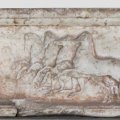“Posh” science, it is indeed. It calls for expertise in molecular biology, robotics, micro-fabrication and bio-infomatics.
And while it is a tad difficult for the novice to grasp the concepts of microarrays, gene chips and genetic constructs, it is crystal clear that something of international significance is happening at the Institute of Molecular Bioscience (IMB)’s Expression Genomics Laboratory.
Dr Sean Grimmond and his colleague Rohan Teasdale are poised to unravel the invaluable secrets of the human genome and determine the biological functions of individual genes.
“Now that the human genome is sorted, we are developing one of the first tools to make sense of how to use it,” Dr Grimmond said.
His UQ Foundation Research Excellence Award will facilitate a collaboration with RIKEN researchers in Japan to mass-screen up to 10,000 human genes to determine which biological functions they control.
This information will give insights to the cancer cycle and mammalian development in ways that can change modern medicine forever.
It will build a library catalogue of the genes that make up the body, where they are located and the biological process they control – be it cell growth, the cell cycle or cell suicide.
“When we identify the genes that are definitely involved in the suicide cycle or controlled cell death (apoptosis), it is conceivable that we can introduce those genes to cancer cells and reverse the process,” Dr Grimmond said.
They have developed a microarray technique which uses an ordinary glass microscope slide that is transformed by extraordinarily smart science to tag up to 32,000 gene elements according to the functions they perform in our bodies.
Ultimately this knowledge will enable the identification of drugs that give a positive response and those that give a caustic response, and adjust treatments accordingly.
Dr Grimmond was recruited by the IMB in 2001 to establish techniques that will put the IMB and UQ at the forefront of this exciting and “posh” science. He first studied microarrarys at the Mammalian Genetics Unit in the United Kingdom and is a recipient of a National Health and Medical Research Council (NMHRC) career development award (2002–2006).
.jpg)



